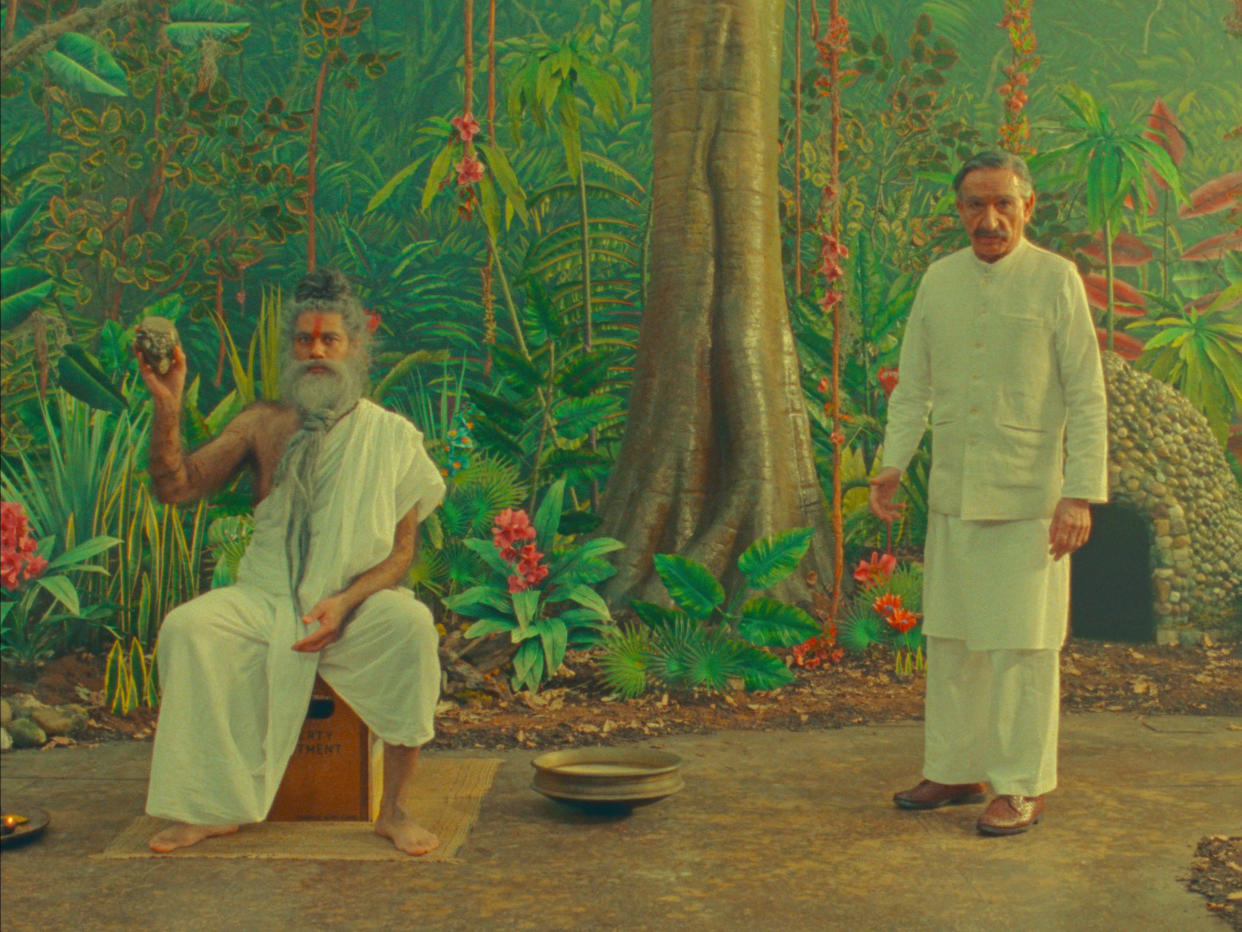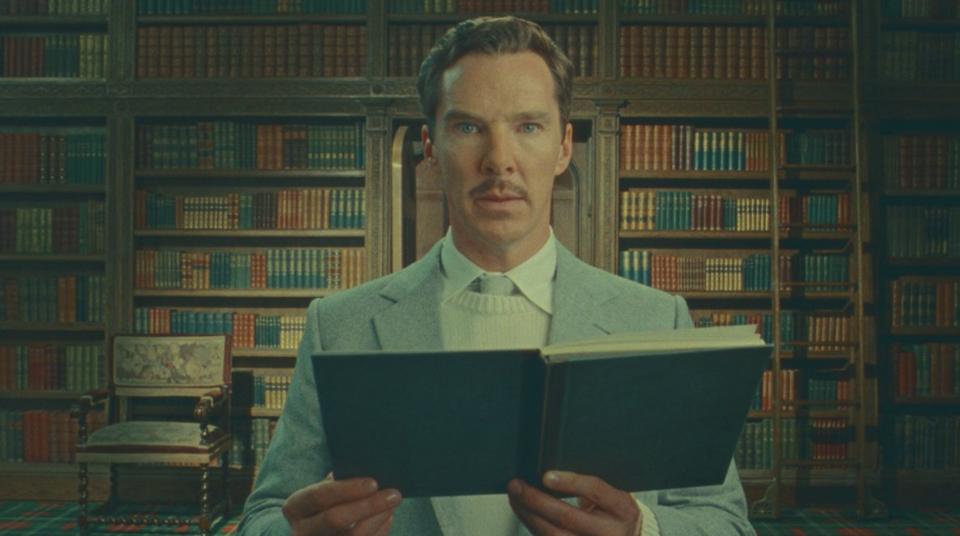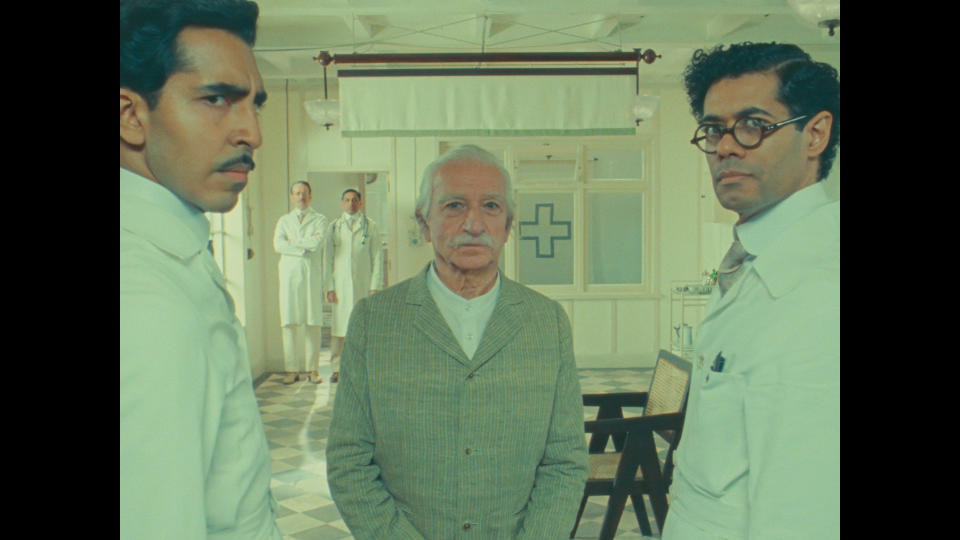The Sets Move as Much as the Actors in Wes Anderson’s ‘The Wonderful Story of Henry Sugar’

After a lifeless, Hall-of-Presidents-esque AI version of Wes Anderson’s visual style went viral earlier this year, it’s nice to see how the actual director crafts a story told mostly in static, theatrical frames. “The Wonderful Story of Henry Sugar” collects Anderson’s adaptations of four Roald Dahl short stories, but all the pieces of this Netflix short series (now streaming) are photographed in an even less naturalistic style than the director’s earlier feature this year, “Asteroid City.” The collection of shorts was an opportunity, then, for Anderson and his longtime collaborators to push what they could achieve together.
In “The Wonderful Story of Henry Sugar,” a company of actors narrates Dahl’s prose directly to the audience (and, therefore, the camera). Movement comes somewhat from Robert Yeoman’s camera but much more from details flying in and out (and off) of the sets constructed by production designer Adam Stockhausen with Matryoshka doll-level depth. The result is an environment that is as consciously artificial as it is playful, delighting in the chance to build little jungles or circuses or hospitals inside the theatrical frame of Dahl’s imagination.
More from IndieWire
That theatricality owes much to Stockhausen’s sets, which have the texture of intricate, 3D pop-out cards. But it is Stockhausen and Yeoman working together to create the effect for the viewer, with the camera’s position, the lens choice, and the lighting and sets moving in concert.
“It’s very particular and so takes quite a bit of time to prepare,” Stockhausen told IndieWire. “Bob and I have worked together on several of Wes’ projects and so there’s definitely a shorthand which helps a lot. Beyond all the modeling and planning we also set up our cameras and tracks days or even sometimes a week before the actual shot. This allows us… to make sure that all the planning we did on the computer is actually translating to real life and real lenses.”
Yeoman had to order special dolly tracks to help facilitate the tear-away quality of the “Henry Sugar” sets and make holes at the bottom so the camera could remain in place; that’s how important the sets moving in concert with a pre-planned camera position was to the look of each short film.
“There were also many lighting changes that occur during our camera moves which needed to be worked out,” Yeoman told IndieWire. “When Henry Sugar (Benedict Cumberbatch) goes from the exterior of the casino to the lobby to the interior of the gambling room, three distinct looks were needed and there was a lot of dimming of lights, et cetera, in the course of our camera moves.”

Even in shots where the camera remains stationary, there was a large amount of planning between the camera and production design departments. “There’s a lot of previewing we do with models — both digital and cardboard — to figure out the exact composition. It does get a little confusing sometimes as we are often building pieces in multiple scales at the same time. We might use a full-scale element combined with a foreground in-camera miniature piece. Then later, we may see the same set piece entirely in miniature. The tree in ‘The Swan’ was like this — we saw it multiple times in different sizes,” Stockhausen said.
One of the most intricate pieces is the jungle that Imdad Khan (Ben Kingsley) trudges through in order to find a Yogi (Richard Ayoade). “It’s sort of an illustrated jungle come to life, so none of the plants were real or pretending to be,” Stockhausen said. But it took a lot of experimentation to get the right level of sculptural and painted vines and flowers in order to create the overall effect of the magic-lantern-esque foliage and much longer to shoot than the backdrop of “Poison,” which came together in a couple of weeks.
For Yeoman, keeping the camera static meant the opportunity to play with lighting. “The Swan” uses only natural light, so Stockhausen and his team had to create those sets in a parking lot outside Maidstone Studios while Yeoman had to time the details of both camera and set movement to work with the lighting they had. Inside the studio, Yeoman would sometimes hang lights on the set walls and play with big lighting changes inside of sequences. The goal was to create a sense that everything we see, including the actors, is all part of the same illustrated story come to life. “I wanted [the actors] to always feel a part of the environment,” Yeoman said.

The environment is intrinsically tied to a love of Dahl’s stories by beginning “The Wonderful Story of Henry Sugar” with the author himself (Ralph Fiennes) in his writing hut. “All of the details are taken as accurately as possible from Dahl’s actual writing hut. In fact, a few of the objects are his actual pieces,” Stockhausen said. “But the arrangement of the space is sized and proportioned specifically for our lens and angles.”
The result is a very careful balance between researched details and a distinct compositional style for how the props, the color balance, and the proportions of the space all slot together in the frame. While the look of “The Wonderful Story of Henry Sugar” fits perfectly into Anderson’s other collaborations with Stockhausen and Yeoman, its creation took far more than choosing a twee color palette and arranging unusual objects symmetrically.
“Wes and I always start talking about these things with references and the shot ideas — usually as he’s working on the storyboards. In this case, the narration and moving theatrical scenery devices were really the foundation. Color usually comes into the conversation a bit farther down the road,” Stockhausen said.
Best of IndieWire
Where to Watch This Week's New Movies, from 'The Exorcist: Believer' to 'Dicks: The Musical'
The Best Thrillers Streaming on Netflix in October, from 'Fair Play' to 'Emily the Criminal'
Sign up for Indiewire's Newsletter. For the latest news, follow us on Facebook, Twitter, and Instagram.

 Yahoo News
Yahoo News 
